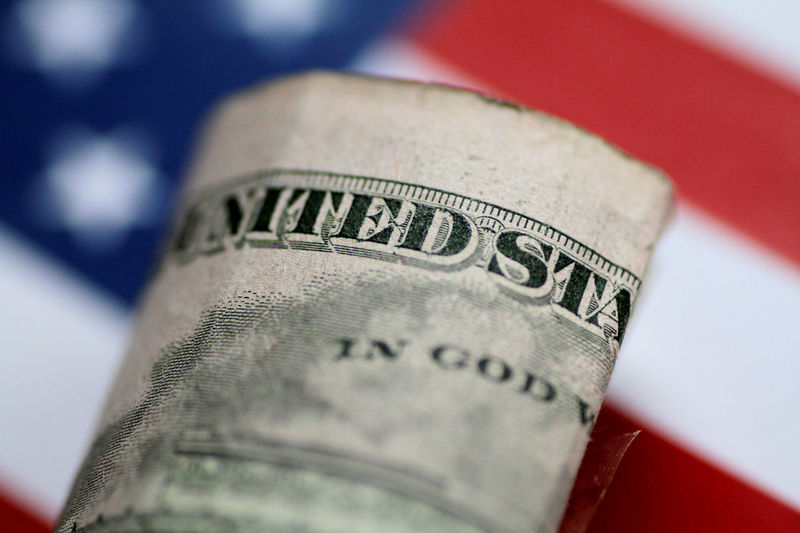United Homes Group stock plunges after Nikki Haley, directors resign
Investing.com - The U.S. dollar rose slightly higher Tuesday, stabilizing after recent banking-induced losses as the prospect of upcoming trade talks between the U.S. and China helped ease some concerns over a renewed trade war.
At 04:25 ET (08:25 GMT), the Dollar Index, which tracks the greenback against a basket of six other currencies, traded 0.2% higher to 98.570, after recording last week the biggest five-day retreat since late July.
Dollar stabilizes after banking woes
Attention in the foreign exchange markets has drifted away from concerns about the state of the U.S. banking sector with U.S. equities extending the rebound on eased credit market concerns.
“Zions Bank’s earnings report was solid outside of the losses linked to fraud, even though scrutiny remains high on any other signs of credit stress in the system,” said ING analyst Francesco Pesole, in a note.
The U.S. dollar has received a boost from Japanese yen weakness [see below], but also from expectations that U.S. President Donald Trump will be able to reach a trade deal with Chinese President Xi Jinping at a meeting between the two on the sidelines of an economic conference in South Korea next week.
Trade tensions between the world’s two biggest economies have weighed on global confidence, with disputes over tariffs, technology and market access remaining largely unresolved.
Additionally, White House economic adviser Kevin Hassett said that the 20-day U.S. federal government shutdown was likely to end this week.
“Not much is moving on U.S.-China trade tensions ahead of the end-of-month scheduled meeting between Trump and Xi,” added Pesole, “with the approach seemingly being a wait-and-see one mixed with some cautious optimism that Trump will get a deal out of China.”
Sterling pressured by borrowing data
In Europe, EUR/USD traded 0.2% lower to 1.1622, little helped by easing political uncertainty in France.
“EUR/USD remains almost entirely driven by U.S. credit/equity sentiment: here, further stabilisation could take EUR/USD all the way to 1.160. Levels below that will be harder to justify unless the U.S. CPI on Friday comes in hotter than expected,” said ING’s Pesole.
GBP/USD traded 0.2% lower to 1.3383, after data showed that Britain’s borrowing in the first half of the financial year was the highest on record except during the height of the coronavirus pandemic.
Government borrowing in the first six months of the tax year totalled £99.8 billion, up 13% from a year earlier and £7.2 billion more than forecast by Britain’s budget watchdog.
Finance minister Rachel Reeves is set to announce the country’s next budget in November, and she is expected to announce new tax hikes to balance the budget.
Takaichi wins PM vote
Elsewhere, USD/JPY traded 0.3% higher to 151.14, with the Japanese yen pressured after Sanae Takaichi, leader of the Liberal Democratic Party, gained enough votes to be elected the new prime minister.
Takaichi is widely viewed as fiscally dovish, and is expected to ramp up government spending and prompt looser fiscal conditions in the country.
She is also expected to oppose more interest rate hikes by the Bank of Japan, with the central bank set to decide on the matter next week.
USD/CNY slipped marginally to 7.1178, with the Chinese yuan remaining somewhat upbeat after a series of strong midpoint fixes by the People’s Bank.
The focus remains chiefly on more dialogue between Beijing and Washington, after President Trump struck a somewhat conciliatory tone on his trade threats against China.
AUD/USD slipped 0.4% to 0.6489, with the Aussie dollar falling even as Canberra signed a major critical minerals deal with Washington.
